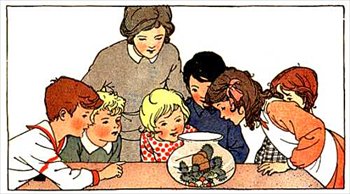During our class on Tuesday, our class was exposed to the many resources available for each grade in the K-6 curriculum. I was pleasantly surprised with what was available!
One of the biggest surprises I found was that the primary math books (especially kindergarten) were focused on learning through stories. In kindergarten, each concept is taught through one of the small books which also match the child's reading level (they are organized by reading level - emergent, early, etc.). In grades one and two, the math books look more like workbooks, but each new topic has a story to start that section of the book. One of the things that I liked most about these books, was that they seemed very student-oriented. All of the small books had either pictures of children at that age level, or had pictures of things that students were used to seeing. They were very relatable!
I was overwhelmed with the resources available for some of the elementary grades, especially grade 5. I love that there are so many resources available, but for me, I think it would be hard to stay organized if I had so many different books to look through.
One thing I did notice in all of the textbooks was the use of pictures next to long word problems. As I have said in my math autobiography, I used to fear problem solving. I could never relate how the words in the problem matched with the math I was supposed to be using. In the textbooks available now, there are pictures that are directly related to the word problem right next to the words on the page. One problem in grade six was talking about a bucket with water, and right next to it was a picture of a bucket with water, including measurement lines. I loved this idea! It is so important to be including clues and tools that can facilitate learning through the multiple intelligences.

I think the most important thing to take from all of this is that as teachers, we won't be thrown into a course without anything to help us. There are plenty of tools available to us, but we have to think critically to see which resources are best suited for the students in our class so that we teach meaningful lessons instead of just circling problems in a textbook.











